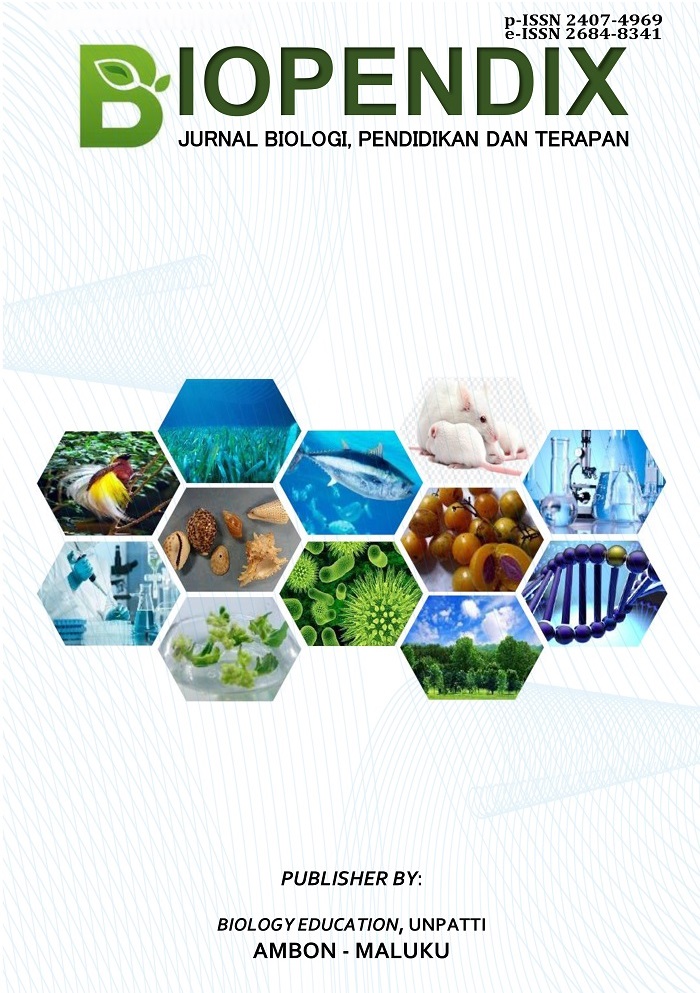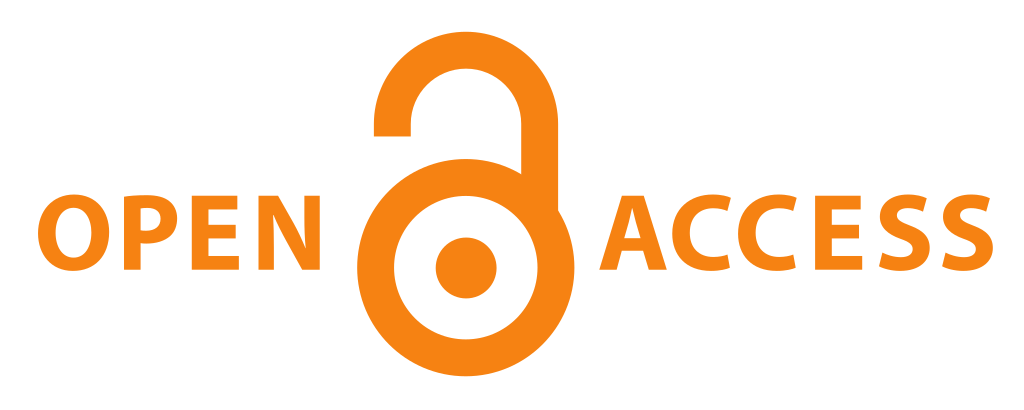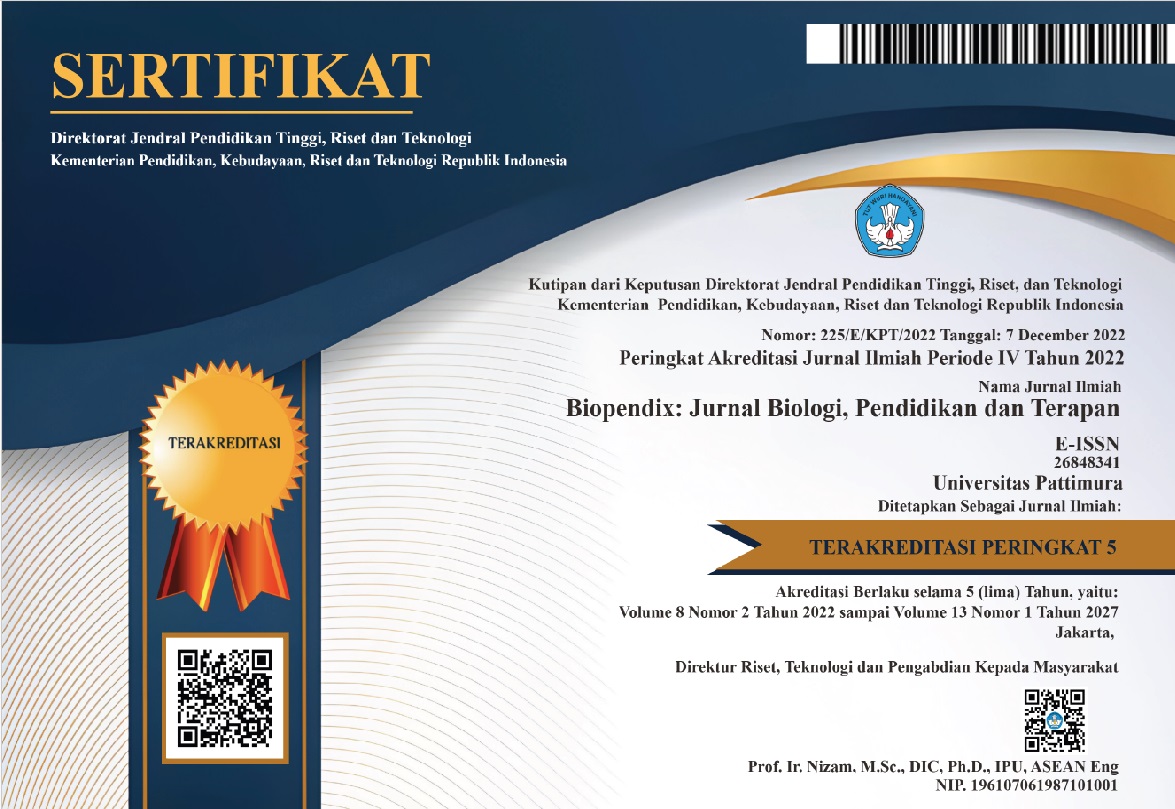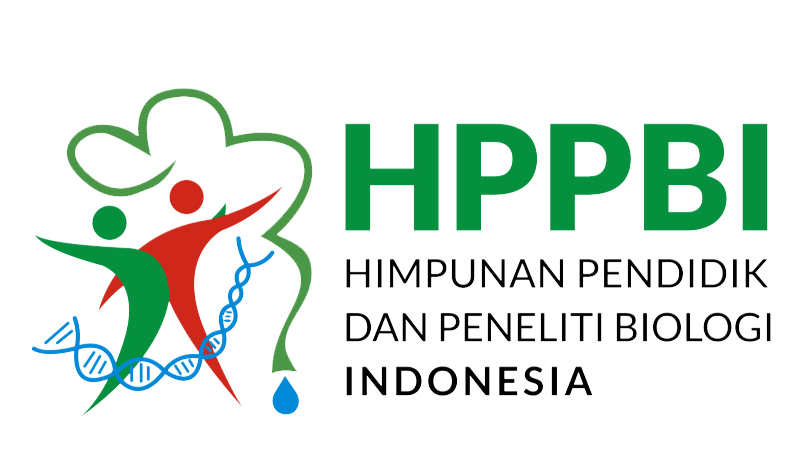Effect of Giving Ethanol Extract of Palm Fruit (Arenga pinnata Merr.) on The Lipid Profile of White Rats (Rattus norvegicus L.) Induced by Carbon Tetrachloride (CCl4)
Abstract
Carbon tetrachloride (CCl4) is a chemical substance in the form of a clear liquid, volatile and toxic with a sweet odor. Palm fruit (Arenga pinnata Merr.) is a plant that has high antioxidants and is able to reduce the effects of free radicals in the body. The purpose of this study was to evaluate the impact of ethanol administration of palm fruit (Arenga pinnata Merr.) on total cholesterol, triglyceride, HDL and LDL levels of white rats (Rattus norvegicus L.) which were induced by carbon tetrachloride (CCl4). This study used a completely randomized design with 20 mice divided into 5 treatments and 4 replications. Negative controls were given food and drink, positive controls were given carbon tetrachloride 1 mL/kg BW + olive oil ratio 1:3, Treatments 1,2, and 3 were given carbon tetrachloride 1 mL/kg BW + olive oil with a ratio 1:3 + palm fruit ethanol extract in graded doses (P1=90, P2=180, and P3=360 mg/kg BW) for 15 days. Data analysis used one way ANOVA and continued with the Duncan test. The results showed that 1 mL/kg BW of carbon tetrachloride could damage the lipid profile of white rats. Giving ethanol extract of palm fruit (Arenga pinnata Merr.) to P1 and P2 at a dose of 90 mg/kg BW and 180 mg/kg BW had no significant effect. Meanwhile, P3 with a dose of 360 mg/kg BW had a significant effect on reducing total cholesterol, triglyceride and LDL levels and could significantly increase HDL levels at a significant level (p<0.05).
Downloads
References
Domínguez, R., Pateiro, M., Gagaoua, M., Barba, F. J., Zhang, W., & Lorenzo, J. M. (2019). A comprehensive review on lipid oxidation in meat and meat products. Antioxidants, 8(10), 1–31. https://doi.org/10.3390/antiox8100429
Elgawish, R. A. R., Rahman, H. G. A., & Abdelrazek, H. M. A. (2015). Green tea extract attenuates CCl4-induced hepatic injury in male hamsters via inhibition of lipid peroxidation and p53-mediated apoptosis. Toxicology Reports, 2, 1149–1156. https://doi.org/10.1016/j.toxrep.2015.08.001
Elsawy, H., Badr, G. M., Sedky, A., Abdallah, B. M., Alzahrani, A. M., & Abdel-Moneim, A. M. (2019). Rutin ameliorates carbon tetrachloride (CCl4)-induced hepatorenal toxicity and hypogonadism in male rats. PeerJ, 7, 1–20. https://doi.org/10.7717/peerj.7011
Fadillah, N. M., & Febriani, H. (2024). Uji Aktivitas Antidiabetes Ekstrak Daun Pacar Air ( Impatiens balsamina L . ) Terhadap Ginjal Tikus Wistar ( Rattus novergicus L . ). 11, 110–120.
Ichsan, M. Z. (2022). Efek Pemberian Ekstrak Etanol Rimpang Jeringau Terhadap Gambaran Morfohistologi Ginjal Tikus Pasca Induksi Natrium Nitrit. KLOROFIL: Jurnal Ilmu Biologi Dan Terapan, 6(2), 1. https://doi.org/10.30821/kfl:jibt.v6i2.11787
Krishnaveni, P., & Gowda, V. M. N. (2015). Assessing the validity of friedewald’s formula and anandraja’s formula for serum LDL-cholesterol calculation. Journal of Clinical and Diagnostic Research, 9(12), BC01–BC04. https://doi.org/10.7860/JCDR/2015/16850.6870
Kusumawardani, N., Fauzi, R., Emelda, E., Estiningsih, D., Ananda, R. D. S., & Nabila, L. (2024). Pengaruh Pemberian Fraksi n-Heksan Ekstrak Etanol Daun Kelor (Moringa oleifera L.) Terhadap Kadar Low-Density Lipoprotein (LDL) Tikus Jantan Galur Sprague dawley. Pharmaceutical Journal of Indonesia, 9(2), 141–148. https://doi.org/10.21776/ub.pji.2024.009.02.9
Nadhira, A. N., Nurwati, I., & Budiani, D. R. (2023). Efek Ekstrak Etanolik Daun Kelor Terhadap Kadar HDL, Kadar LDL, serta Ketebalan Aorta Tikus Wistar Model Sindrom Metabolik. Plexus Medical Journal, 2(1), 1–8. https://doi.org/10.20961/plexus.v2i1.219
Naru, R. A., Febriani, H., & Syukriah, S. (2023). Pengaruh Pemberian Ekstrak Etanol Daun Asam Jawa ( Tamarindus indica L .) Terhadap Profil Lipid Tikus Putih ( Rattus norvegicus ) yang Diinduksi Minyak Jelantah Amalia Naru R , Febriani H , Syukriah : Pengaruh Pemberian Ekstrak Etanol Daun Asam Jawa ( Tam. Journal Biology Education, Sains & Technology, 6(1), 515–521.
Ogbuehi, I., Adikwu, E., & Oputiri, D. (2014). Lipid Lowering and Appetite Suppressive Effect of Leaves of Moringa oleifera Lam. in Rats. British Journal of Pharmacology and Toxicology, 5(3), 103–108. https://doi.org/10.19026/bjpt.5.5443
Rosiana, I. W., & Widhiantara, I. G. (2020). Histologi Lumen Dan Endotelium Arteri Dorsal Penis Tikus Wistar (Rattus Novergicus) Yang Diinduksi Pakan Tinggi Lemak. Metamorfosa: Journal of Biological Sciences, 7(1), 73. https://doi.org/10.24843/metamorfosa.2020.v07.i01.p10
Senduk, B., Bodhi, W., & Kepel, B. J. (2016). Gambaran profil lipid pada remaja obes di Kota Bitung. Jurnal E-Biomedik, 4(1). https://doi.org/10.35790/ebm.4.1.2016.10847
Sovia, E., & Anggraeny, D. (2019). Sugar Palm Fruits (Arenga pinnata) as Potential Analgesics and Anti-Inflammatory Agent. Molecular and Cellular Biomedical Sciences, 3(2), 107. https://doi.org/10.21705/mcbs.v3i2.63
Vishnoi, H., Bodla, R., Kant, R., & Bodla, R. B. (2018). Green Tea (Camellia Sinensis) and Its Antioxidant Property: a Review. Article in International Journal of Pharmaceutical Sciences and Research, 9(5), 1723. https://doi.org/10.13040/IJPSR.0975-8232.9(5).1723-36
Weber, L. W. D., Boll, M., & Stampfl, A. (2003). Hepatotoxicity and mechanism of action of haloalkanes: Carbon tetrachloride as a toxicological model. Critical Reviews in Toxicology, 33(2), 105–136. https://doi.org/10.1080/713611034
Authors who publish with this Journal agree to the following terms:
- Author retain copyright and grant the journal right of first publication with the work simultaneously licensed under a creative commons attribution license that allow others to share the work within an acknowledgement of the work’s authorship and initial publication of this journal.
- Authors are able to enter into separate, additional contractual arrangement for the non-exclusive distribution of the journal’s published version of the work (e.g. acknowledgement of its initial publication in this journal).
- Authors are permitted and encouraged to post their work online (e.g. in institutional repositories or on their websites) prior to and during the submission process, as it can lead to productive exchanges, as well as earlier and greater citation of published works





 2
2






